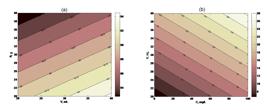Abstract
In this work we have assessed the decolorization of textile effluents throughout their treatment in a solid-state fermentation (SSF) system. SSF assays were conducted with peach-palm (Bactris gasipaes) residue using the white rot fungus Ganoderma lucidum EF 31. The influence of the dye concentration and of the amounts of peach-palm residue and liquid phase on both the discoloration efficiency and enzyme production was studied. According to our results, independently of experimental conditions employed, laccase was the main ligninolytic enzyme produced by G. lucidum. The highest laccase activity was obtained at very low effluent concentrations, suggesting the existence of an inhibitory effect of higher concentrations on fungal metabolism. The highest percentage of color removal was reached when 10 grams of peach palm residue was moistened with 60 mL of the final effluent. In control tests carried out with the synthetic dye Remazol Brilliant Blue R (RBBR) decolorization efficiencies about 20% higher than that achieved with the industrial effluent were achieved. The adsorption of RBBR on peach-palm residue was also investigated. Equilibrium tests showed that the adsorption of this dye followed both Langmuir and Freundlich isotherms. Hence, our experimental results indicate that peach-palm residue is suitable substrate for both laccase production and color removal in industrial effluents.
Keywords:
dye; solid-state fermentation; Ganoderma lucidum; oxidative enzymes

 Thumbnail
Thumbnail
 Thumbnail
Thumbnail

